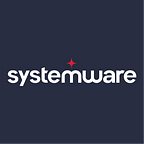Does Your ECM Strategy Address the Risk of Legacy ECM Systems?
Despite the availability of new and innovative technologies for Enterprise Content Management (ECM), many businesses still rely on aging legacy ECM systems. Often, these legacy systems, which are based on architectures that are unsuitable for the modern era of IT, have been in place for a decade or longer. This results in a range of problems. Because legacy ECM systems were not designed for today’s security standards, interoperability, compliance controls, or business continuity, they create security risk exposure.
Legacy ECM systems are bad for operations, too. Their content silos drive operational inefficiencies. High maintenance costs strain budgets. Unfriendly, archaic architecture makes it difficult for users to access enterprise content when and where they need it. The legacy ECM interface is also not designed for modern user, either. Legacy ECM platforms are noticeably underservicing organizations, ultimately becoming a roadblock for businesses to realize the true value of their information.
Security risks of legacy ECM
Beyond enabling organizations with content, an ECM solution’s job must remain governed and secure. If an ECM solution does not align with current standards and controls, it will fail. Legacy ECM systems can be a huge liability in this context, though this is often unknown to the organization. Many aging systems don’t meet today’s standards for securing and protecting critical, high-value business data.
Legacy ECM systems are vulnerable even to obsolete threats. Indeed, the top nine security threats that have recently compromised legacy ECM systems consist of malware code that is over three years old. Legacy systems are exposed to risk because they were not designed to address even these aging security threats. When attacked by newer threat vectors that are designed specifically to expose systems, legacy ECM solutions don’t stand a chance, regardless of the number of “band aids” organizations place on them.
Further risk exposure arises because legacy ECM does not generally interoperate well with security and identity management systems. As a result, organizations try to manage ECM security in multiple places. When it comes to user security, legacy ECM solutions can force the hand of organizations to adopt less than ideal administration scenarios. Updates in one location do not replicate automatically in others — creating multiple points of failure.
For example, if admins grant access rights to a user in one legacy ECM system, that user may not have comparable access privileges in other systems. That’s a big problem, potentially, one that might be revealed in an audit. However, by then it’s probably too late. After all, as a user’s job changes, security rights and roles also change, and the complexities are compounded in managing these in more than one location.
Unless an organization is carefully considering and handling its ECM controls, it puts human error squarely in the middle of key security measures. Many of the breaches happening today — particularly on the government side — are related to this. Security concerns are expanded further when legacy ECM systems are left stagnant, making them an easy target for data breaches.
Make security a central part of ECM strategy
Ultimately, it is the organization’s responsibility to perform the due diligence required to ensure that its ECM solutions and configurations are kept current. This is essential because the needs of the modern enterprise are rapidly changing, especially in leveraging the value of information. Protecting data, that critical asset, should be central to ECM strategy.
With aging, inflexible and hard-to-replace legacy ECM systems in operation, what’s needed is not just an overhaul of ECM solutions, but a reevaluation of the organization’s entire information strategy. Information is only going to increase in business value over the coming years. Prioritizing how that content is managed, leveraged, and secured is essential to a company’s success.
Data managers and their partners in security need to understand the role of ECM in the organization. Although ECM solutions that enhance productivity and operational efficiencies may easily align back to departmental dollars, it is imperative that organizations from the top down use their information initiatives and ECM strategies to routinely reevaluate the state of security and compliance. The goal is to ensure that their ECM solutions do not become legacy roadblocks and risks that compromise business success.
With the constant evolution of technology, legacy ECM systems are no longer up to par in security terms. If existing infrastructure is not providing the security and control a business needs, then it’s time for a change — a big one. This may be part of IT modernization, which Gartner says involves a “complete overhaul of the culture of IT.” If that sounds extreme, well, that’s because it is. Moving on from a legacy ECM system or strategy is a substantial project, but it’s well worth the effort. With the right approach to ECM strategy, a business can focus more on growth and less on security and compliance risk.
